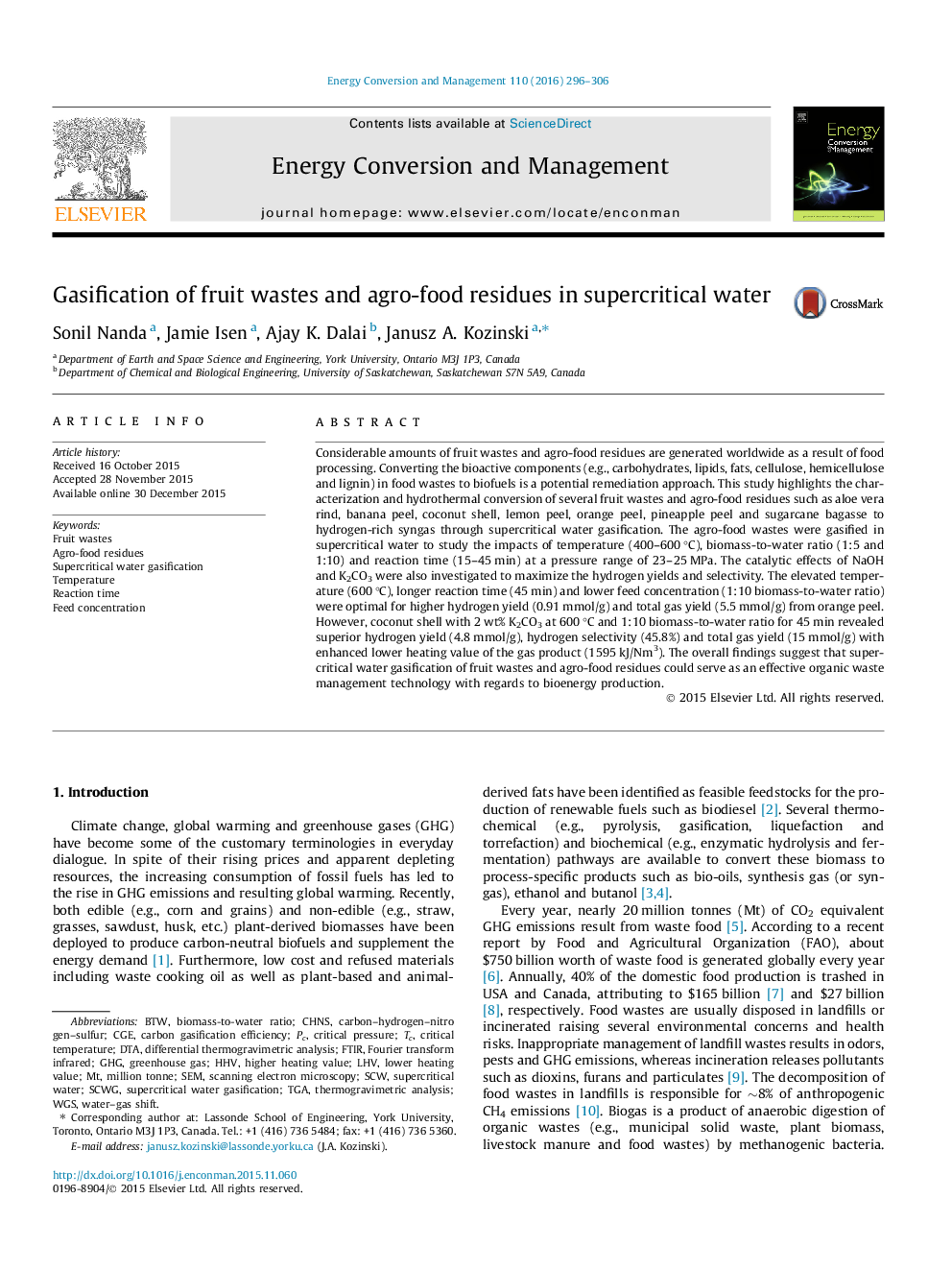| Article ID | Journal | Published Year | Pages | File Type |
|---|---|---|---|---|
| 760354 | Energy Conversion and Management | 2016 | 11 Pages |
•Supercritical water gasification of various fruit wastes and agro-food residues.•Coconut shell had superior carbon content and calorific value due to high lignin.•Maximum H2 yields at 600 °C with 1:10 biomass-to-water ratio, 45 min and 23–25 MPa.•High H2 yields from coconut shell, bagasse and aloe vera rind with 2 wt% K2CO3.•High CH4 yields from coconut shell with 2 wt% NaOH due to methanation reaction.
Considerable amounts of fruit wastes and agro-food residues are generated worldwide as a result of food processing. Converting the bioactive components (e.g., carbohydrates, lipids, fats, cellulose, hemicellulose and lignin) in food wastes to biofuels is a potential remediation approach. This study highlights the characterization and hydrothermal conversion of several fruit wastes and agro-food residues such as aloe vera rind, banana peel, coconut shell, lemon peel, orange peel, pineapple peel and sugarcane bagasse to hydrogen-rich syngas through supercritical water gasification. The agro-food wastes were gasified in supercritical water to study the impacts of temperature (400–600 °C), biomass-to-water ratio (1:5 and 1:10) and reaction time (15–45 min) at a pressure range of 23–25 MPa. The catalytic effects of NaOH and K2CO3 were also investigated to maximize the hydrogen yields and selectivity. The elevated temperature (600 °C), longer reaction time (45 min) and lower feed concentration (1:10 biomass-to-water ratio) were optimal for higher hydrogen yield (0.91 mmol/g) and total gas yield (5.5 mmol/g) from orange peel. However, coconut shell with 2 wt% K2CO3 at 600 °C and 1:10 biomass-to-water ratio for 45 min revealed superior hydrogen yield (4.8 mmol/g), hydrogen selectivity (45.8%) and total gas yield (15 mmol/g) with enhanced lower heating value of the gas product (1595 kJ/Nm3). The overall findings suggest that supercritical water gasification of fruit wastes and agro-food residues could serve as an effective organic waste management technology with regards to bioenergy production.
Graphical abstractFigure optionsDownload full-size imageDownload as PowerPoint slide
